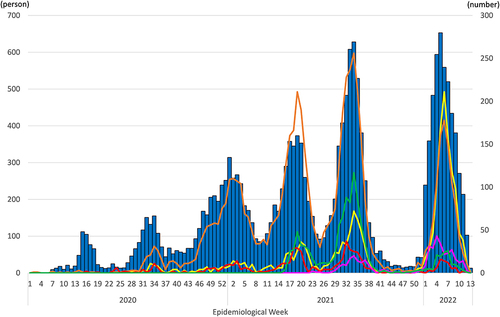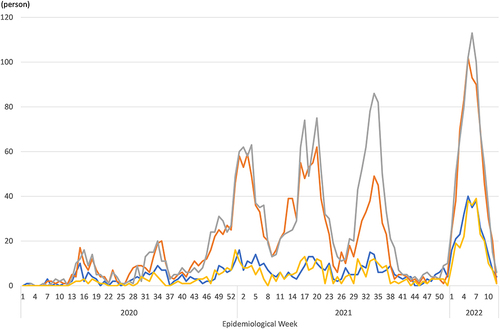Figures & data
Figure 1 Number of new hospitalizations in MIA data and number of drugs used against COVID-19.

Figure 2 Number of underlying diseases of SARS-CoV-2 infected inpatients, by MIA data.

Table 1 Estimation Results of Logistic Regression for Death with the Administered Drug and Proportion of Mutated Strains
Table 2 Estimation Results of Logistic Regression for Death with Proportion of the Mutated Strains and with and without Administered Drugs
Table 3 Estimation Results of Logistic Regression for Death with Administered Drugs and Periods of Waves When the Mutated Strains Were Dominant
